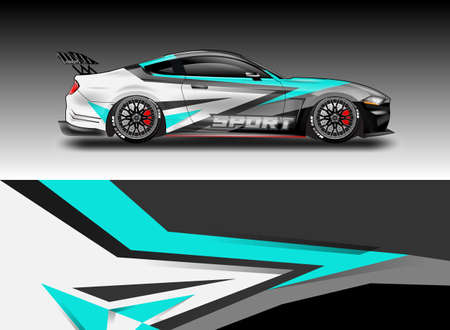1. Introduction
Technology has played a crucial role in shaping modern motorsport competitions. From the early days of racing to todays high-tech machines, advancements in engineering, aerodynamics, and data analytics have revolutionized the sport. In this article, we will explore how technology has evolved in motorsport and its impact on modern racing competitions.
The Evolution of Motorsport Technology
Motorsport has come a long way since the first car race in the late 19th century. Over the decades, new technologies have consistently pushed the boundaries of performance, safety, and efficiency. Below is a comparison of key technological advancements over different racing eras:
| Era | Key Technological Advancements |
|---|---|
| 1950s – 1970s | Basic aerodynamics, enhanced tire technology, early computer-assisted designs |
| 1980s – 1990s | Turbocharged engines, electronic fuel injection, advanced telemetry systems |
| 2000s – Present | Hybrid power units, artificial intelligence in data analysis, real-time vehicle monitoring |
Impact on Performance and Safety
Modern motorsport relies heavily on technology to improve vehicle performance and driver safety. Todays race cars are equipped with cutting-edge innovations such as advanced aerodynamics, carbon fiber chassis, and high-performance braking systems. Additionally, real-time telemetry has enabled teams to monitor engine performance, tire wear, and fuel efficiency with incredible precision.
Enhanced Communication and Strategy
One of the most significant benefits of technological advancements in motorsport is the ability for teams to communicate efficiently. Engineers can now relay critical data to drivers in real time, allowing for strategic decisions that can change the outcome of a race. This has added a new layer of complexity and excitement to motorsport competitions.
Looking Ahead
As technology continues to advance, we can expect further innovations to redefine the future of motorsport. From electric and autonomous race cars to enhanced driver-assist systems, the sport is constantly evolving to push the limits of speed, efficiency, and sustainability.
2. Advanced Aerodynamics
In modern motorsport, aerodynamics is a key factor in determining a car’s speed, stability, and overall performance. Engineers rely on advanced technologies like wind tunnel testing, computational fluid dynamics (CFD) simulations, and active aerodynamics to optimize a race car’s design. These innovations help teams gain a competitive edge by reducing drag, increasing downforce, and improving efficiency.
Wind Tunnel Testing
Wind tunnel testing is a crucial method used to analyze how air flows over and around a race car. Engineers place scale models or full-size vehicles inside a controlled tunnel where air is blown at different speeds. This process allows them to measure aerodynamic forces and make necessary adjustments to enhance performance.
Benefits of Wind Tunnel Testing
- Provides real-world aerodynamic data
- Helps refine vehicle shape for reduced drag
- Optimizes airflow for cooling and efficiency
CFD Simulations
Computational Fluid Dynamics (CFD) simulations use advanced computer models to predict how air interacts with a car’s surfaces. This virtual testing method saves time and costs compared to wind tunnel testing while offering detailed insights into airflow behavior.
Comparison of Wind Tunnel Testing vs. CFD Simulations
| Method | Advantages | Limitations |
|---|---|---|
| Wind Tunnel Testing | Accurate real-world data, physical testing | High cost, time-consuming |
| CFD Simulations | Faster, lower cost, detailed analysis | Relies on computer modeling, less physical validation |
Active Aerodynamics
Many modern race cars now use active aerodynamic features, such as adjustable wings and air vents, to modify airflow in real-time. These systems adjust automatically based on speed, braking, or cornering to maximize efficiency and handling.
Examples of Active Aerodynamics in Motorsport
- Drag Reduction System (DRS) in Formula 1 to increase straight-line speed
- Adjustable rear wings for better cornering stability
- Air ducts that open and close to enhance cooling or reduce drag
Impact on Performance
By combining wind tunnel testing, CFD simulations, and active aerodynamics, race teams can fine-tune every aspect of a vehicle’s airflow dynamics. This results in faster lap times, improved fuel efficiency, and better overall vehicle control.

3. Engine and Powertrain Innovations
The Role of Hybrid Power Units
Hybrid power units have transformed modern motorsport by combining traditional internal combustion engines with electric motors. This technology improves fuel efficiency while maintaining high performance. In series like Formula 1, hybrid systems recover energy from braking and exhaust heat, then reuse it to boost acceleration.
Turbocharged Engines and Performance
Turbocharged engines play a crucial role in enhancing speed and power. By forcing more air into the combustion chamber, turbochargers increase horsepower without significantly increasing engine size. This results in more efficient power output, which is essential in competitive motorsport.
Sustainable Fuel Technology
To make motorsport more eco-friendly, sustainable fuel technology is becoming a key focus. Biofuels, synthetic fuels, and other innovative alternatives help reduce carbon emissions while maintaining performance. Many racing organizations are now adopting sustainable fuel solutions to balance speed with environmental responsibility.
Comparison of Key Engine Innovations
| Technology | Benefits |
|---|---|
| Hybrid Power Units | Better fuel efficiency, energy recovery for extra power |
| Turbocharged Engines | Increased power output, more efficient fuel use |
| Sustainable Fuel | Lower carbon emissions, environmentally friendly racing |
The combination of hybrid power units, turbocharging, and sustainable fuels is pushing motorsport towards a future with both high performance and improved efficiency.
4. Data Analytics and Telemetry
In modern motorsport, real-time data collection and AI-driven insights play a crucial role in optimizing car performance and race strategy. Every millisecond counts on the track, and technology allows teams to analyze data instantly, making informed decisions that can be the difference between winning and losing.
How Real-Time Data Collection Works
Motorsport teams rely on a network of sensors placed throughout the car to collect essential performance data. These sensors monitor key metrics, such as speed, tire pressure, engine temperature, fuel efficiency, and aerodynamic performance. The data is then transmitted to the pit crew and engineers in real time.
Key Metrics Monitored in Race Cars
| Metric | Purpose |
|---|---|
| Speed | Helps analyze lap times and acceleration |
| Tire Pressure | Ensures optimal grip and prevents blowouts |
| Engine Temperature | Prevents overheating and mechanical failures |
| Fuel Efficiency | Optimizes pit stop strategy and overall weight balance |
| Aerodynamic Performance | Assesses downforce and drag for better handling |
AI-Driven Insights for Strategy Optimization
Artificial intelligence and machine learning have transformed how race teams approach strategy. By analyzing large datasets, AI can detect patterns and predict outcomes, allowing teams to make data-driven decisions. This can include selecting the best tire compounds, optimizing fuel usage, and even anticipating weather conditions.
Benefits of AI in Race Strategy
- Predictive Modeling: AI helps teams forecast tire degradation and fuel consumption.
- Real-Time Adjustments: Data-driven insights allow teams to react instantly to changing race conditions.
- Competitor Analysis: AI can track rival teams’ strategies and suggest countermeasures.
Impact on Driver Performance
Beyond helping engineers, data analytics also enhances driver performance. Real-time telemetry provides drivers with feedback about their braking points, throttle application, and cornering speeds. This allows them to refine their racing line and improve lap times.
How Drivers Benefit from Data
- Enhanced Driving Techniques: Instant feedback helps drivers make on-the-fly adjustments.
- Reduced Wear and Tear: Efficient driving preserves tires and car components.
- Strategic Decision-Making: Data empowers drivers to make smarter on-track decisions.
Data analytics and telemetry have revolutionized motorsport, making races more competitive and technologically advanced. As these technologies continue to evolve, teams will find even more innovative ways to gain an edge on the track.
5. Safety and Driver Assistance Technology
Safety is one of the most critical aspects of modern motorsport. Over the years, technology has played a vital role in improving driver protection and minimizing the risks involved in high-speed racing. Innovations such as the Halo device, energy-absorbing materials, and electronic driver aids have significantly enhanced safety standards.
Impact of the Halo Device
The Halo device is one of the most crucial safety advancements in motorsport. It is a titanium structure mounted above the cockpit, designed to protect drivers from debris, crashes, and potential head injuries. Since its introduction in Formula 1 and other racing series, the Halo has proven to be a life-saving measure in multiple incidents.
Energy-Absorbing Materials
Modern racing cars are built using advanced energy-absorbing materials that enhance crash protection. These materials help absorb and dissipate impact forces, reducing the risk of severe injuries. Below is a comparison of traditional and modern safety materials used in motorsport:
| Material Type | Usage | Impact Absorption |
|---|---|---|
| Aluminum | Used in older racing chassis | Moderate |
| Carbon Fiber | Common in modern race cars | High |
| Honeycomb Structures | Integrated into chassis | Very High |
Electronic Driver Aids
Electronic driver assistance systems provide additional layers of safety by offering real-time data and control mechanisms to help drivers manage their vehicles under extreme conditions. Some key electronic safety aids include:
- Traction Control: Helps prevent wheel spin on slippery surfaces.
- ABS (Anti-lock Braking System): Ensures maximum braking efficiency without locking wheels.
- Telemetry Systems: Allow teams to monitor car performance and driver health in real-time.
Advancing Safety for the Future
As motorsport continues to evolve, safety technology is expected to advance further. Innovations such as autonomous crash prevention systems, improved cockpit protection, and AI-powered accident analysis will continue to make racing safer for drivers and teams worldwide.
6. Future Trends in Motorsport Technology
Exploring the future of motorsport with developments in electrification, autonomous systems, and enhanced connectivity.
Electrification in Motorsport
Electric and hybrid powertrains are becoming more common in motorsport. With advancements in battery technology and energy recovery systems, electric race cars can now compete at high levels of performance.
Key Benefits of Electrification
| Benefit | Explanation |
|---|---|
| Efficiency | Electric motors provide instant torque, resulting in better acceleration and energy use. |
| Environmental Impact | Lower emissions and reduced reliance on fossil fuels make racing more sustainable. |
| Innovation | Motorsport drives advancements in EV technology, influencing consumer vehicles. |
Autonomous Systems and AI
Autonomous driving technology and artificial intelligence (AI) are influencing motorsport. Although full autonomy isnt the goal, AI-assisted driving systems help drivers enhance performance, analyze data, and make real-time decisions.
AI Applications in Motorsport
- Performance Analytics – AI analyzes race data to help teams optimize strategy.
- Driver Assistance – Advanced systems help improve reaction time and vehicle control.
- Simulation and Training – AI-powered simulators help drivers enhance skills off the track.
Enhanced Connectivity and Data Analysis
Motorsport teams rely on high-speed data transmission to gain a competitive edge. Real-time telemetry and cloud-based analysis allow teams to track vehicle performance and adjust race strategies.
Examples of Connected Motorsport Technology
- Remote Diagnostics – Engineers monitor vehicle health and performance from pit lanes.
- 5G Communication – Faster data transfer allows instant decision-making during races.
- Augmented Reality Dashboards – Displays give drivers critical data without distractions.
The Future of Motorsport Innovation
As electrification, AI, and connectivity continue to evolve, motorsport will push the limits of technology. These innovations not only enhance racing but also influence the future of road cars, making driving safer, smarter, and more efficient.


